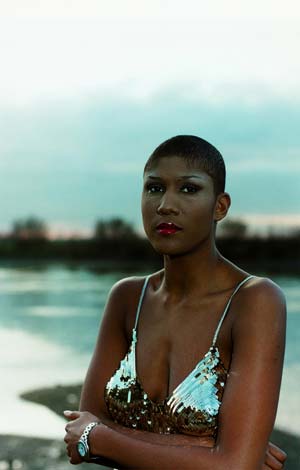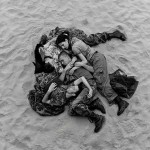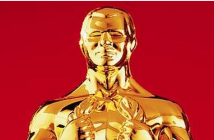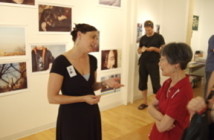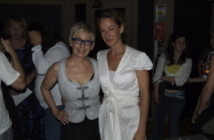Tillmans confronts and confounds us with a seemingly endless stream of images, in what undoubtedly must be looked upon as a kind of mediated "stream" of consciousness. A whole life of culled and collected imagery, cloaked in beauty and a narcissistic hipster cool.
When confronted with over three hundred photographs it is hard to know where to start. How do we pull the show apart and allow it to reveal itself? Do we start examining what the images could mean or do we blow off isolating individual moments and attempt to allow the whole exhibition to wash over us in a thumping, pulsing, steady beat like the rhythm produced by the club culture Tillmans clearly adores? Is either solution enough? True, the exhibition does an excellent job of charting the discursive photographic practice of Wolfgang Tillmans but can we begin to understand this work as something more than a collection of great marketable photographs? The answer is muddled. A muddled maybe. All this makes Tillmans, at best a self-styled photographic Gerhard Richter, with images ranging from portraits, to landscape, to urban and domestic details, to scenes of everyday life, and pure light-oriented abstraction, pushing the limits of image-making on photosensitive paper and making an image by an exploration of all the traditional mediums process and possibilities. That includes light bleed and chemical burns, or just exposing the paper to light getting a rich and perfect black, or maybe just photographing/photocopying text from the newspaper. At best he is a photographic version of a great painting formalist and at worst a great fashion photographer who is pulling in every previously mobilized artistic device to validate his position as the London Art world's darling.
Tillmans "radicalizes" his photographs by a seeming indifference to traditional presentation methods. (He tapes some to the wall.) (Crazy I know, try and stay with me here.) These images are the ambitious ones, the ones that are carrying the weight, of every conceivable genre of image, on their backs. They feel like a rapid-fire barrage, more then 300 photographs ranging from the size of a Polaroid to the size of Julian Schnabel's horrific ego, installed sporadically in clusters, groups, grids, rows, and in isolation. They are occasionally powerful and strikingly beautiful images but they are often flanked and accompanied by other more commonplace or tritely shocking images. The walls adorned at every turn with clever, snap shot-ty little vignettes or massive color abstractions achieved directly with light/chemical burns and bleeds are accompanied by other printed cultural detritus. The centers of both the large galleries have various specimen tables littered with photocopies, photographs of, and original newspapers and other people's photographs. They were seemingly collected to remind us that we are looking at mediated representations of all aspects of life and that Wolfgang can be a good filter for his own and other cultural material.
A comparison with other snapshot aesthetic practioners is natural, but in comparison to an artist like Nan Golden the Wolfgang Tillmans project seems stripped of humanity and unfathomably broad. It scope is far beyond Golden's party snapping and thoughtful examinations of family and personal life. Golden's work rests upon the strength of the "truth claim" generated by the "snapshots" relationship (in our everyday life) to authenticity and the work succeeds because we empathize and recognize life and fragility in the people presented. Tillsmans' snapshots do not require our buy in, nor do they demand our emotional connection to make them succeed. They are formal, composed, self-aware, and often idiosyncratic images. They exist, not to share a world with us as passive viewers, but to construct a world for us and with us. The people in Tillmans' photos flirt with the camera like indie rock hipster awaiting the coming fame of Flaunt, Interview, i-D, or any other fashion magazine. They are constructed, composed, and they come bearing indie/hipster cool rather than Golden's open, broken humanity. Where Golden shares her life, Tillmans borrows the advertising vernacular and invites us to examine it without his bias or comment.
Tillmans 2003 book "If One Thing Matters, Everything Matters" (compiling every Tillmans photo ever produced 2000+ images) begs us to examine the collected images with a "beginners mind", to see everything as if for the first time and to allow this exposure to be defining and meaningful. We don't and we can't. We look at these very beautiful photographs in reference to the practice of photography, to our personal practices of photography, and the cultural practice of image/art making. If we forget this for a moment the Museum itself reminds us. It reasserts our humble place in this cultural history, a history that is in some way a history of ourselves, and it reminds us that we must manage to find our own reference in a big and scary world. Does Tillmans help us? Do we recognize a real humanity in the images? Do they help place us in the world as a title like "If One Thing Matters, Everything Matters" would imply? Nope. But they sure are drop dead gorgeous.
Links:
The Museum of Contemporary Art, Chicago
"Exhibition name" is on view May 20th to August 13th, 2006 at The Museum of Contemporary Art in Chicago.
All images are courtesy of the Museum of Contemporary Art, Chicago.

